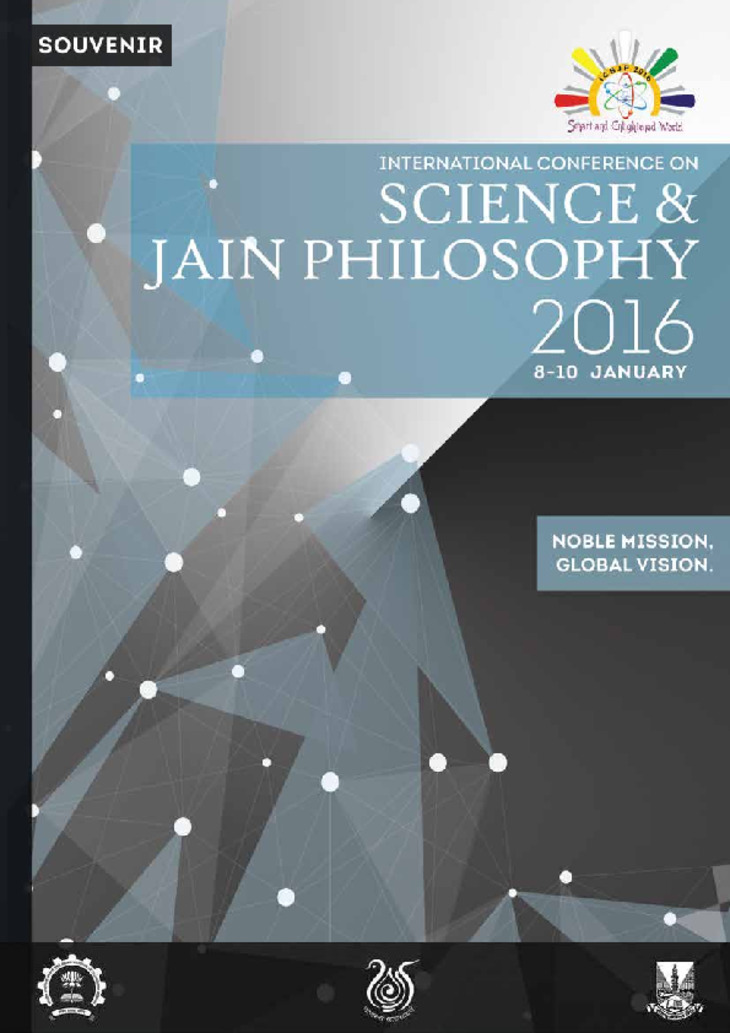
International Conference on Science and Jain Philosophy
 The Space Visionary, winner of several awards, author of several books - Prof Narendra Bhandari M.Sc., Ph.D. has carried out research in Planetary, Earth and space sciences in India and abroad. He has made pioneering contributions to India's first Mission to the Moon, Chandrayaan-1.
The Space Visionary, winner of several awards, author of several books - Prof Narendra Bhandari M.Sc., Ph.D. has carried out research in Planetary, Earth and space sciences in India and abroad. He has made pioneering contributions to India's first Mission to the Moon, Chandrayaan-1.
When we look at religious scriptures, a question which always comes to mind is whether they represent mental deductions based on observations of nature and logic, made by some wise men and women? Those men and women, who pondered over fundamental questions related to life and universe. Or do they represent, as claimed by their staunch followers, some revelations or Extra-Sensory realizations or the 'word of the Lord'. This is true of all the holy books of various religions, Christianity, Islam, Hinduism, Buddhism and Jainism. They contain many statements which are controversial and contradictory to scientific observations and defy logic so that a rational mind would favour the first alternative.
But, in case they represent the 'Ultimate Truth', beyond mind and logic, which science has not yet been able to explore, some proof must exist to support such a belief. It is said that Jain scriptures are compilations of the teachings of the Enlightened, Omniscient Tirthankaras and wherever they contradict science, the faithfuls take recourse to the argument that science is always improving upon its theories, as more observations are made, and one day would come to the same conclusion. This to be true, the first evidence would be that one should find many truths in the scriptures, written millennia ago, when scientific techniques were not developed and which science has discovered only recently. A survey through the scriptures show many such examples. The most outstanding case is the statement in Jaina scriptures that plants are endowed with life and consciousness; they feel pleasure and pain in the same way as other living beings do. This is clearly stated in Gomattsar, Bhagawati sutra, Acharangasutra and many other texts, compiled over 1500 years ago and attributed to pre-Mahavira era, before 2600 years ago. This evidence that plants are living entities, was discovered by Jagadish Chandra Bose only during the past century. Biologists and physicists are still trying to quantify the fine points of the sensitivity of plants to music, sound, affection and cruelty. Certainly, to realise that plants feel pain and pleasure, without any experimental facility, requires some supernatural insight. This fact is deeply imbibed in the conduct of all the Jain followers. Another glaring example is existence of microscopic life in air, water and earth etc. propounded in ancient Jain texts written millennia ago which was only recently realised by scientists, after the advent of a compound optical microscope by Zacharias Jansen in 1590.
On theoretical side, Law of conservation was well documented in Jaina texts where it is clearly stated that the basic 'substances' (dravyas) can neither be created nor destroyed, only their modes can be, which are in a continuous state of flux, origination, persistence and destruction. This has also led to the concept of symmetry in Jain philosophy.
Causality, i.e. cause and effect relationship, is the foundation of all processes in nature, according to Jainism as well as science. Whereas causality is applied only to matter in scientific theories, the scope of causality extends to the living beings in the famous Jaina principle of Karmavad and there it's scope is much wider. These theories could be attributed to mental deductions except for the fact that they are discussed in such minute details in Karma granthas that mental deductions cannot arrive at, but they require some supra-mental faculties. For example, it is clearly stated that karmas do not bind when emotions (like greed, attachment, anger, pride etc. termed kashayas) are absent. The brain scientist have found evidence for secretion or inhibition of chemicals due to emotions; chemicals like Serotonin, Epinephrine, Adrenaline, Testosterone, Cortisol, Oxytorin etc., which affect the DNA, are involved in various emotions, it has been only recently found. Neurologists have recently also identified parts of brain involved in emotions, active during meditation, for example, and happy and unhappy chemicals which are produced during different states of mind which are now being used as medicines. In absence of emotions, these secretions are inhibited, proving the Kashaya theory of Jainism.
Much has been said about the microcosm, the subtle particles of which all matter is made up of. The modes of vibrations and motion of the ultimate atom, the Paramanu, is clearly stated in Agamas, in which the concept of quantum physics is ingrained, which was only conceived recently after it was developed during the last century. It is amazing that Mahavira correctly and clearly described the properties of paramanu, which is only possible, not by mental deductions but by a divine vision by which one can see these processes operating. There is also mention of mass less particles about which scientists learnt only during the past century. True, that everything is not stated in modern scientific terminology but the concepts are profound and relevant. Take for example the property of paramanu, by which one to innumerable or infinite paramanus occupy only one space unit, defined as pradesha. This behaviour is the same as those of bosons, discovered by Satyendra Nath Bose during the last century. We can quote many such examples, which preempt the concepts of modern physics.
A very profound concept of Jainism is Syadvad, propounded by Mahavira, which defines limitation of sensory knowledge and the indescribability of certain states included in the 'Seven modes of predication (Saptabhangi)'. Limitation of knowledge has been debated by mathematicians after Gödel proposed his Incompleteness theorems during the last century. The principle of determinism in physics is the same as Krambaddha paryaya of Jainism; only that this law extends to the living, besides the material universe.
Concepts of various types of infinities were developed by Jaina mathematicians over a thousand years ago. The concept of Sunyavad developed by Buddhist scholars over 1500 years ago maybe akin to Quantum vacuum from which, according to Modern science, even the Universe can emerge. Mutual interaction of the six basic dravyas i.e. time with space, time with soul, time with matter, time with dharmastikaya etc. is mentioned in the Agamas which can be conceived as space-time continuum. Transmigration and Becoming of Jiva; origination, persistence and destruction of matter; origin of motion etc. respectively.
In astronomy, Krishnaraya (black body) and Tamaskaya (dark body) and their many varieties are mentioned in Jaina texts which may be likened to black holes, conceived and studied only during the past few decades. There is a mention of stars brighter than a million suns in Hindu texts, documented only recently. It is hard to attribute these profound concepts simply to mental abstractions, in absence of experimental or theoretical framework, available in the ancient times, but they point towards some kind of divine vision, attained by techniques such as meditation and Samadhi, by which one can connect to the omnipresent Bodhi (conscious) field of the Universe.
In spite of numerous insights into wide range of topics such as working of microcosm, brain, mind and the laws governing the universe etc., some of which have been mentioned above, the texts do contain statements, related to geography and astronomy which are definitely inconsistent with scientific observations. Some scholars have argued that this may be a case of erroneous interpretation, but surely such anomalies raise much doubt. It is also difficult to justify that many scientific concepts, like forces in nature, which govern all the processes in the universe do not find any mention in the scriptures.
 Prof. Dr. Narendra Bhandari
Prof. Dr. Narendra Bhandari
